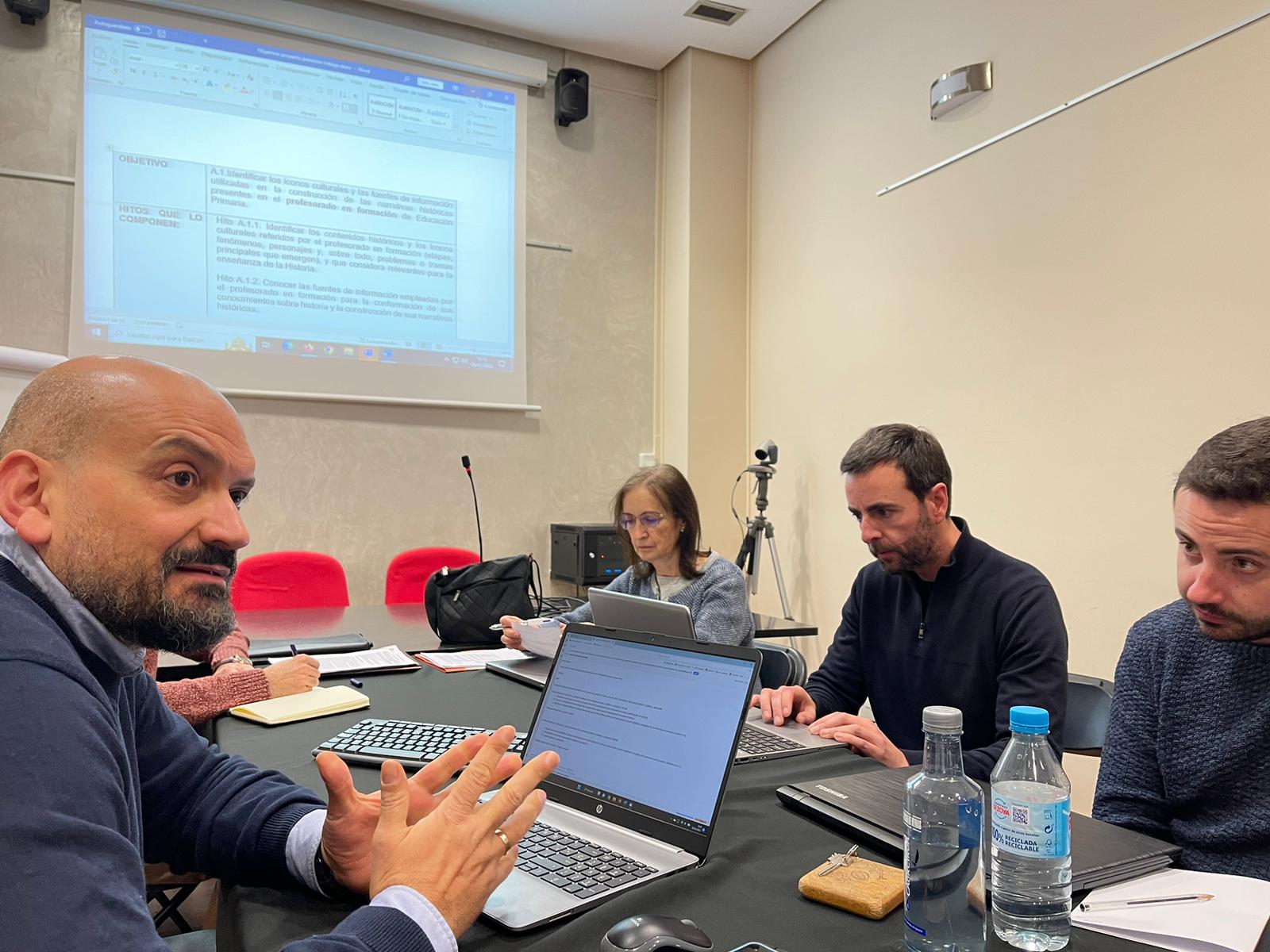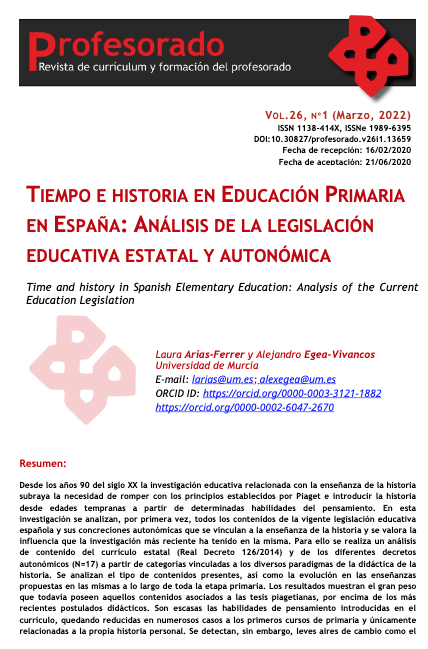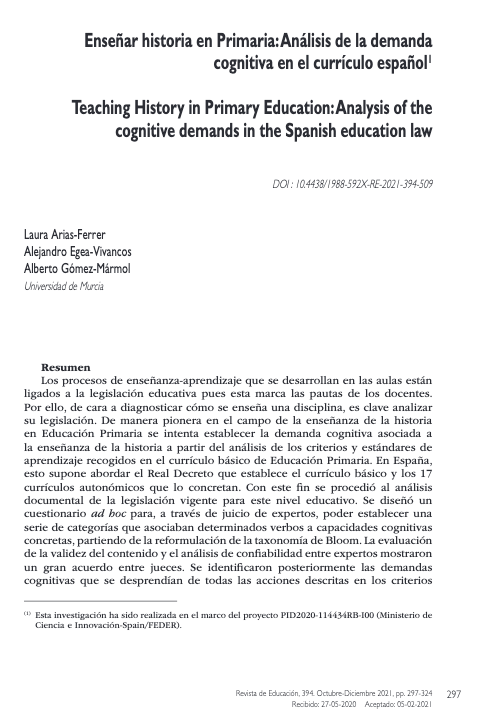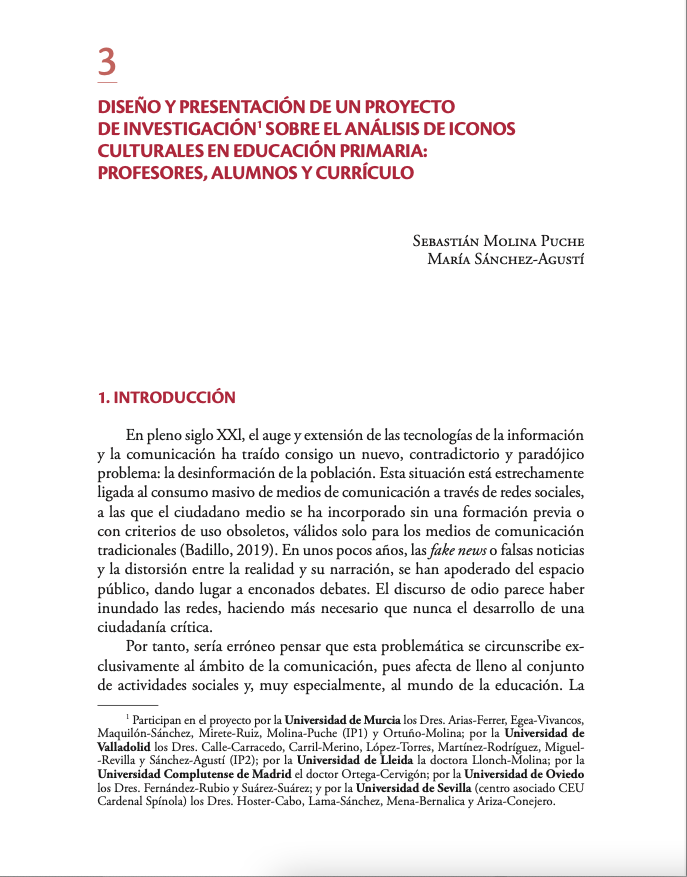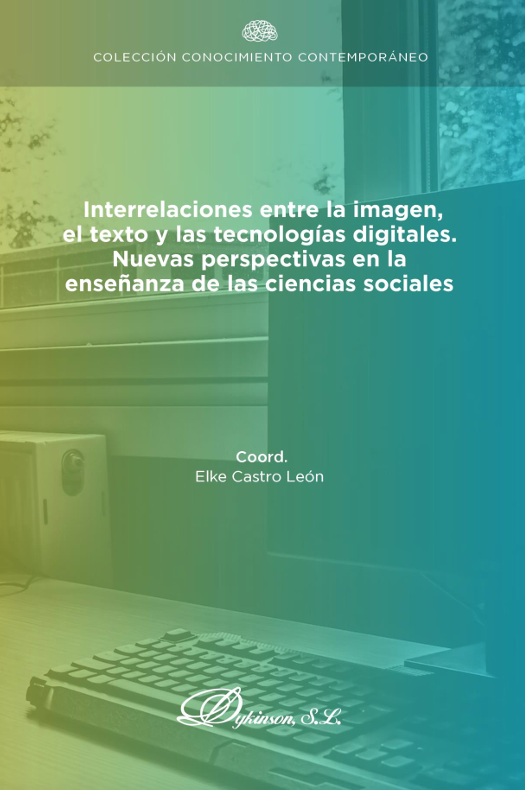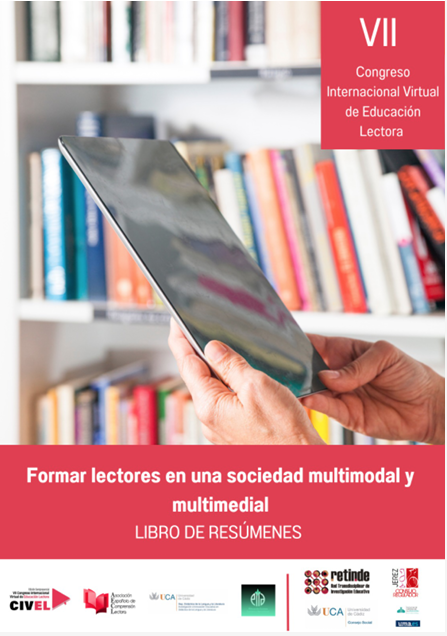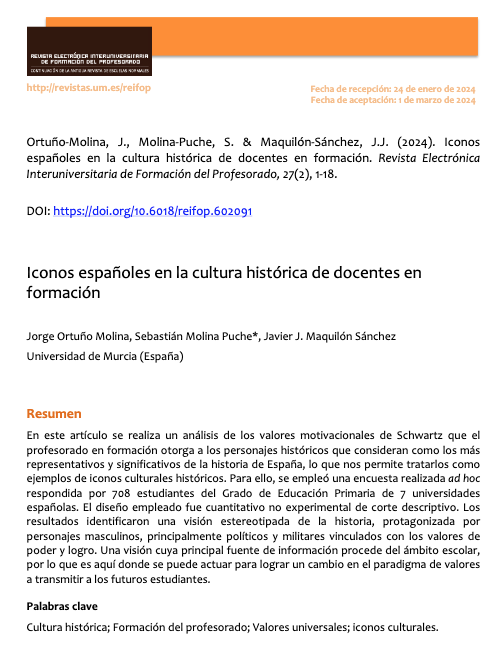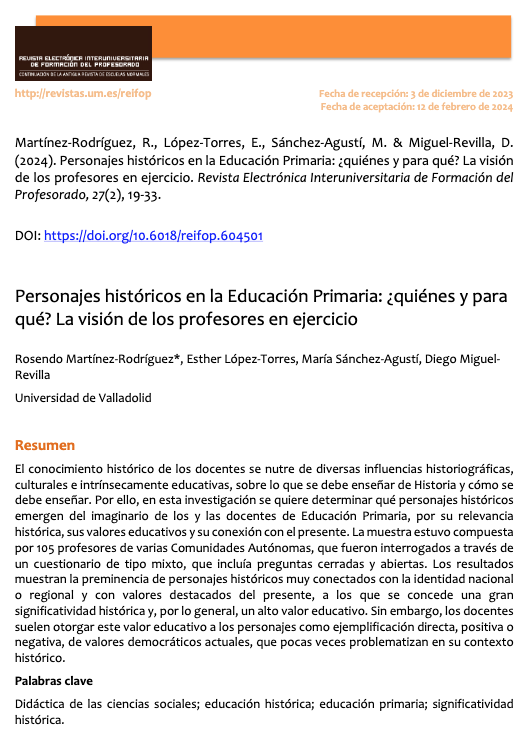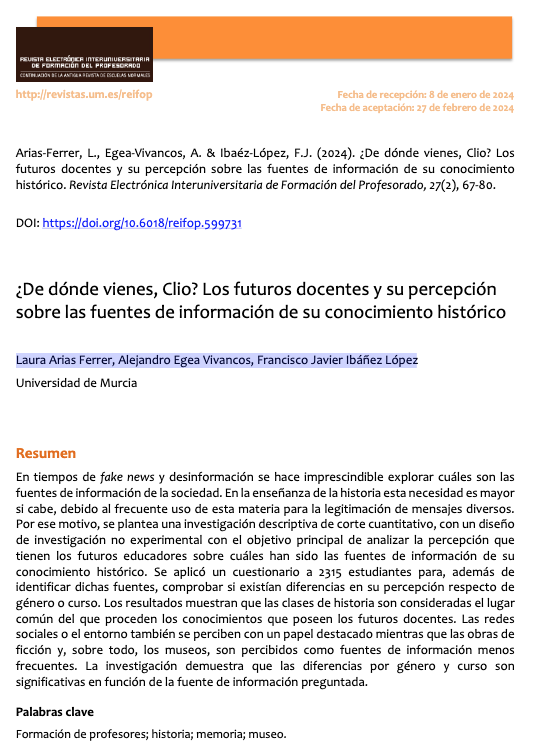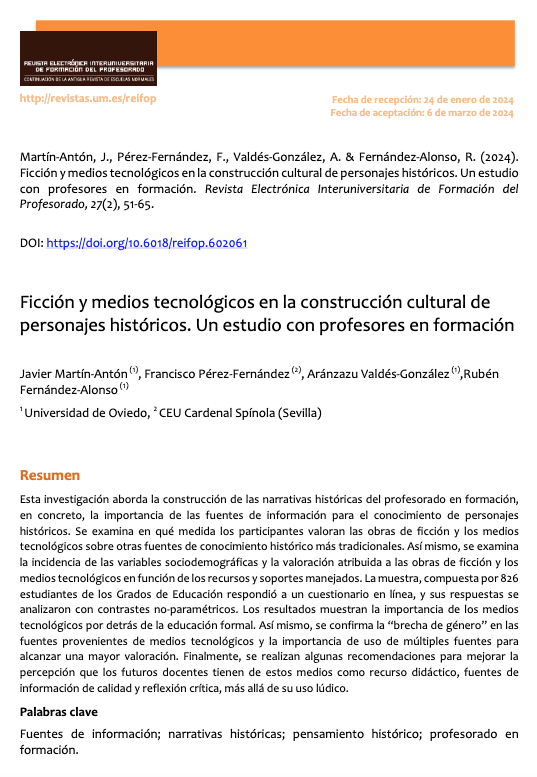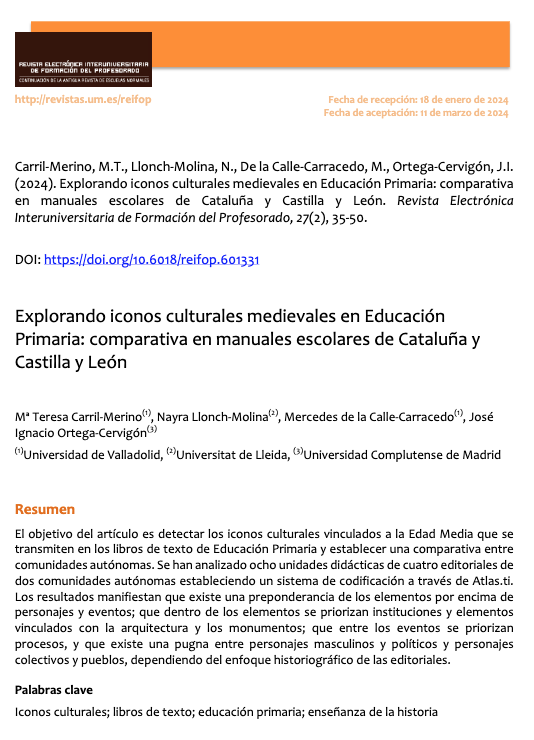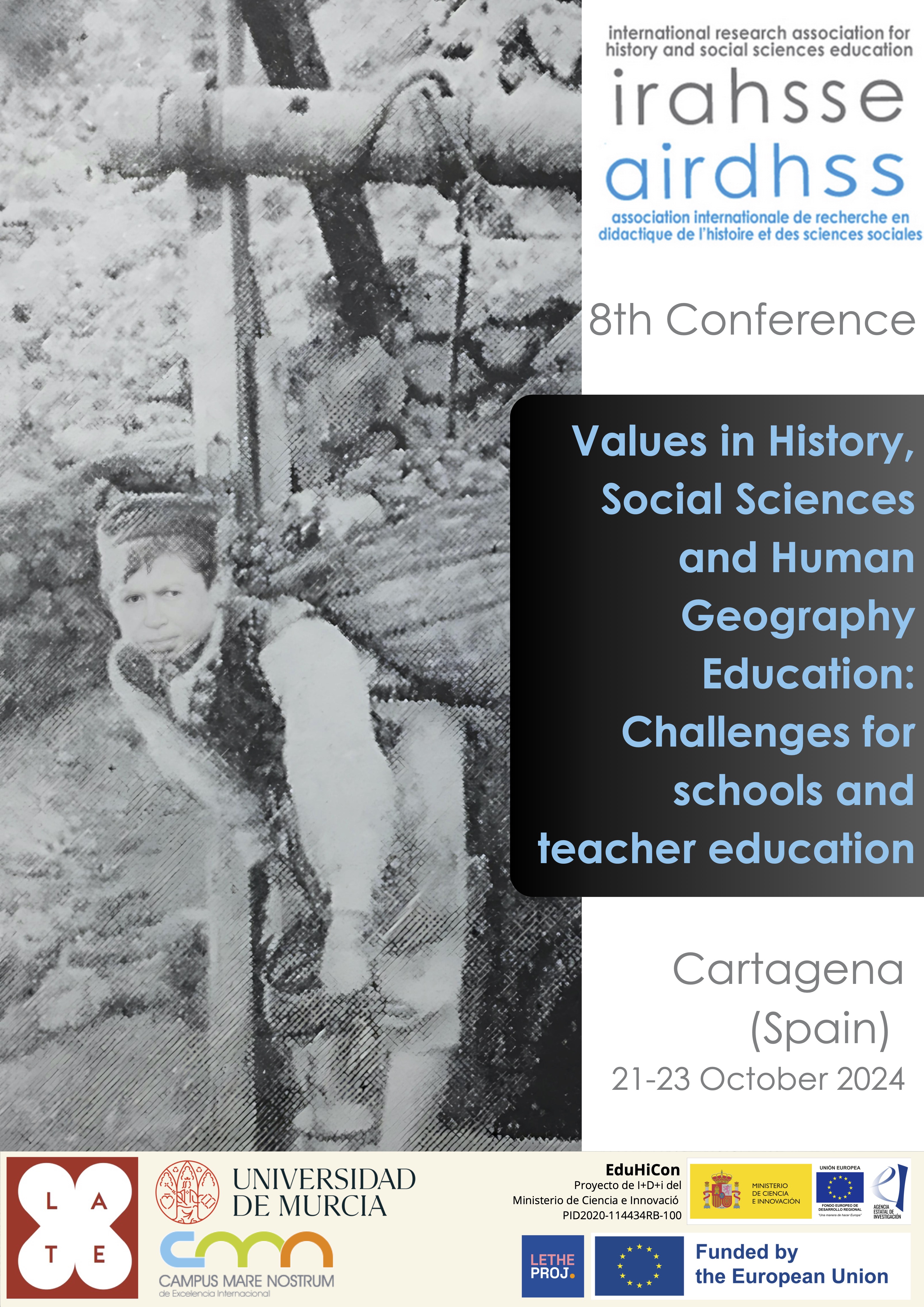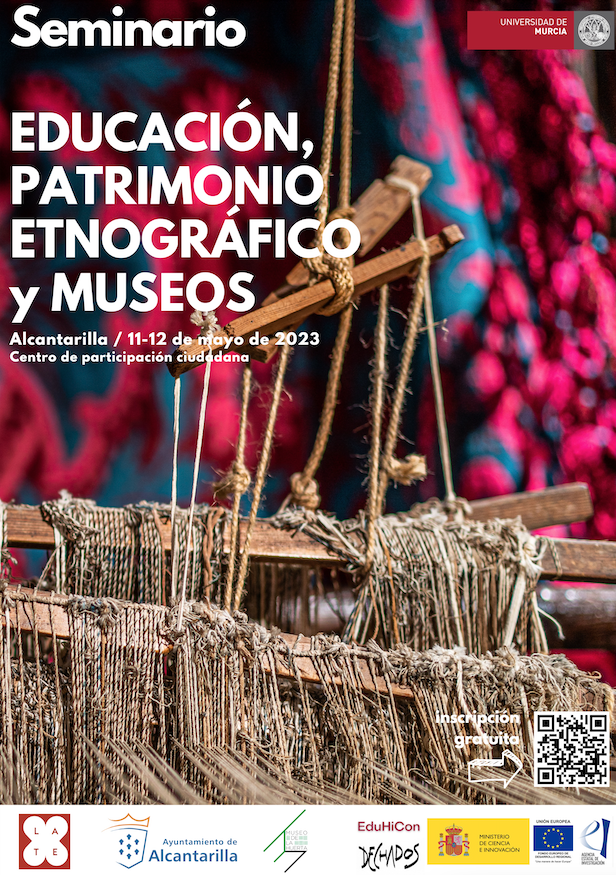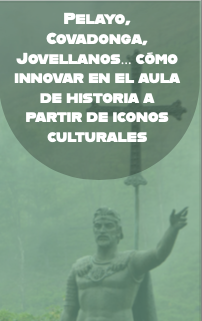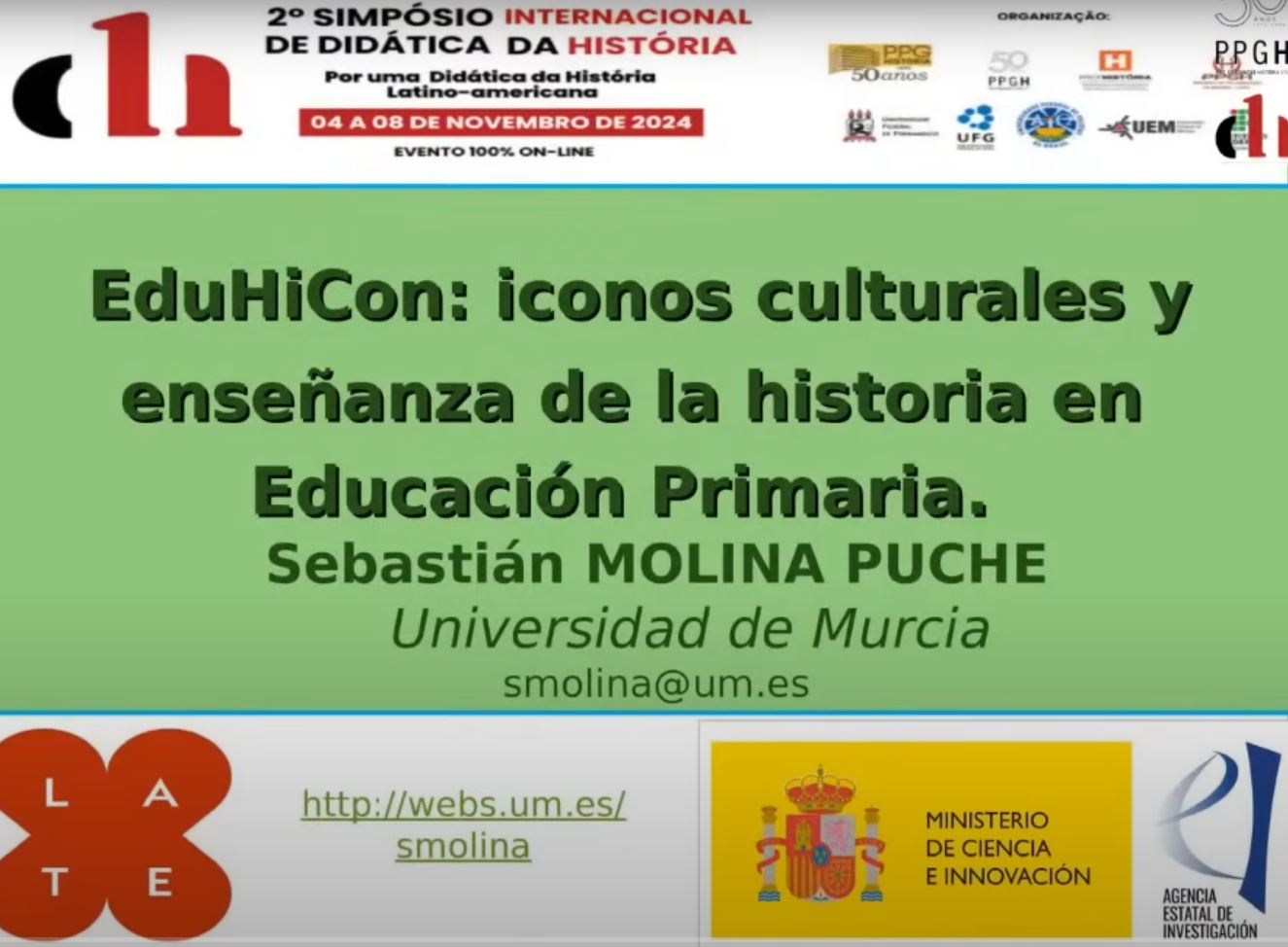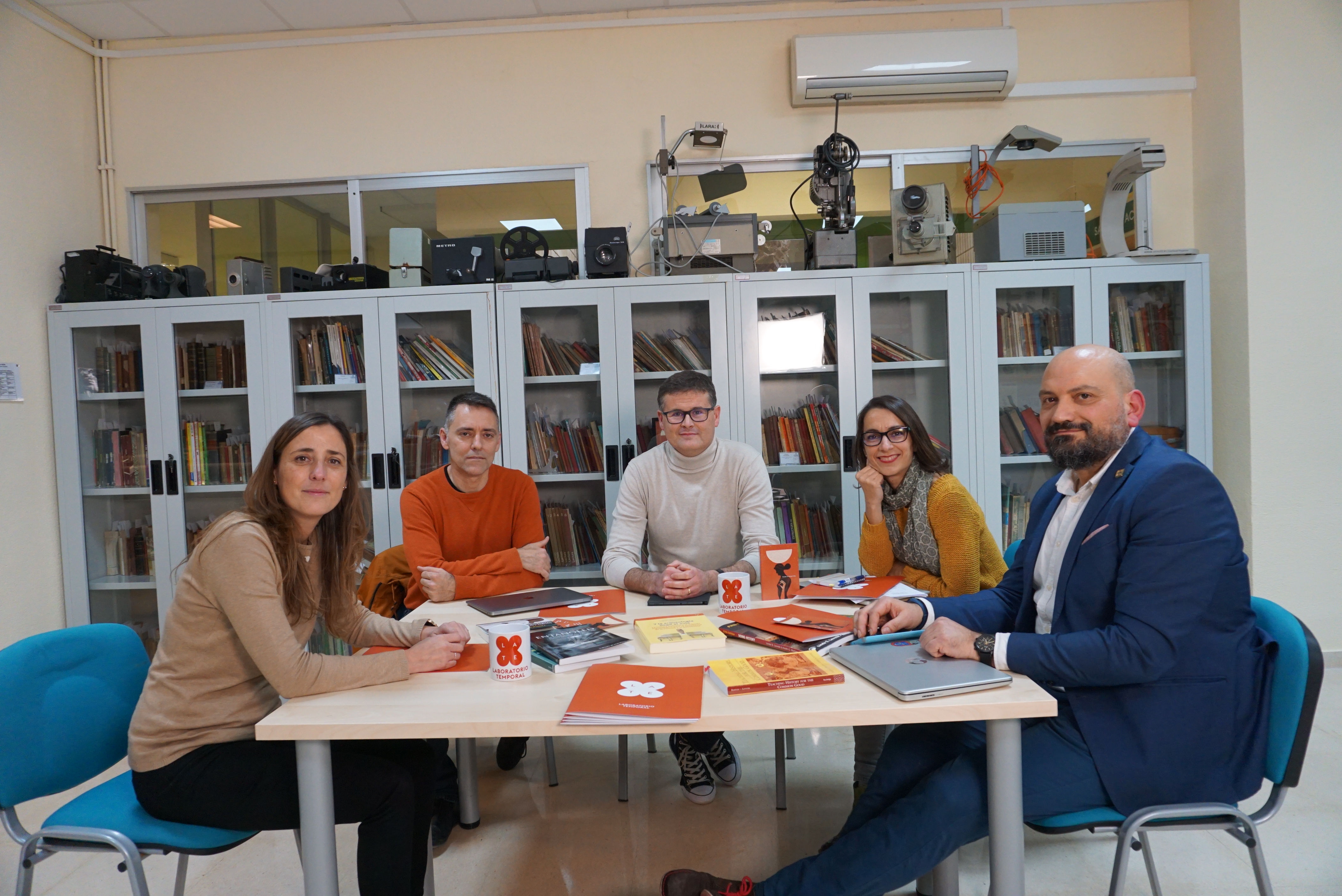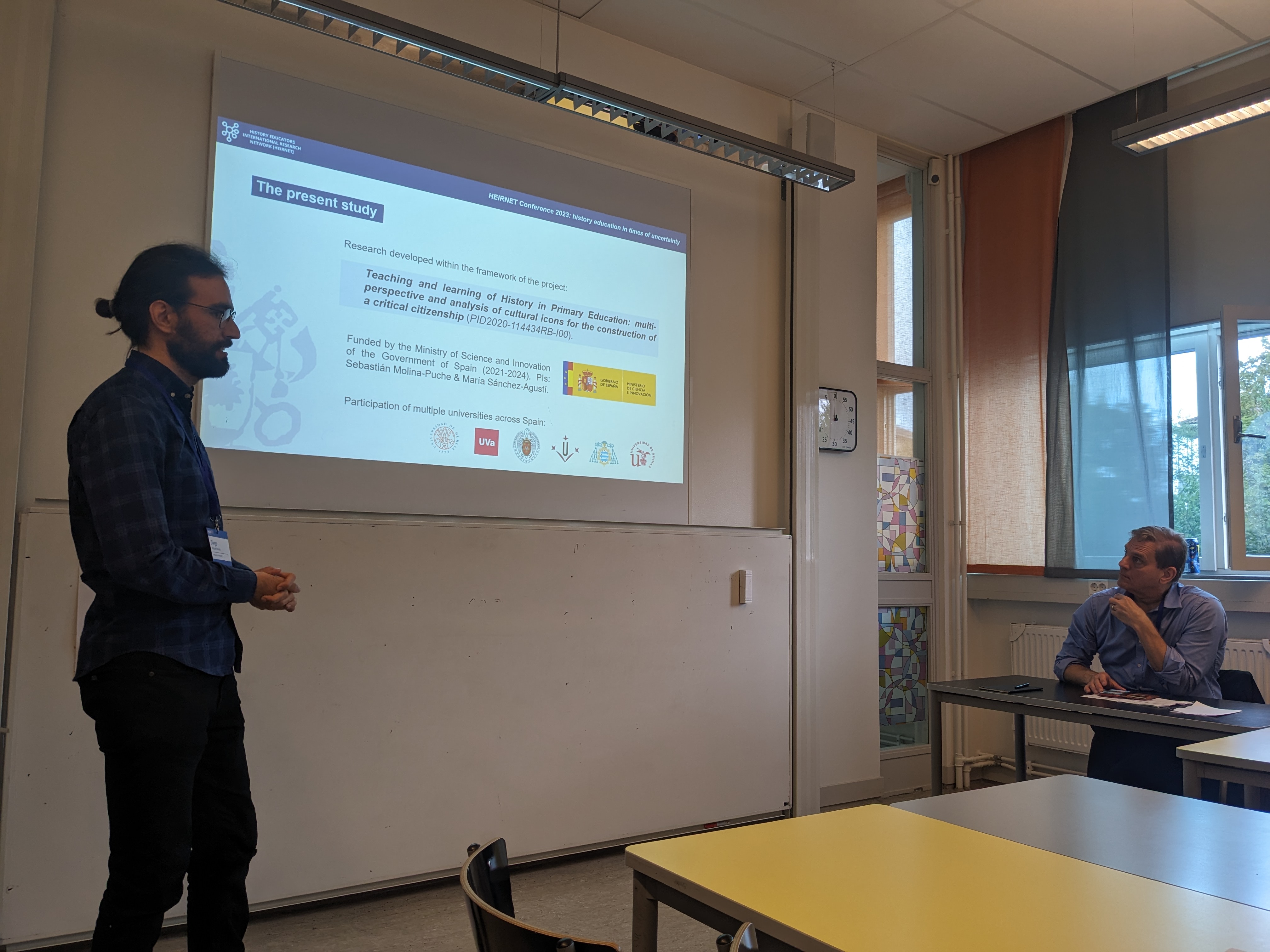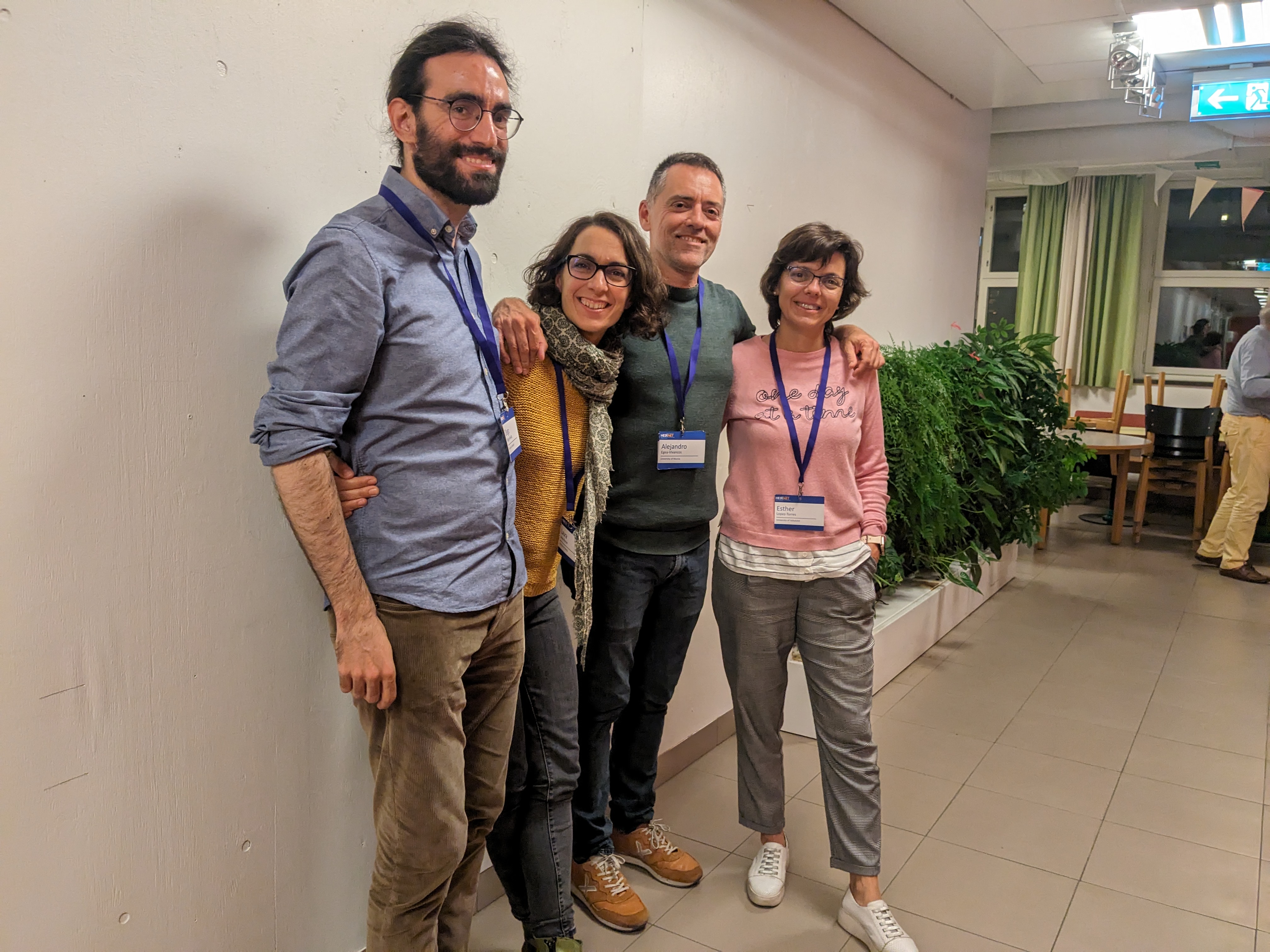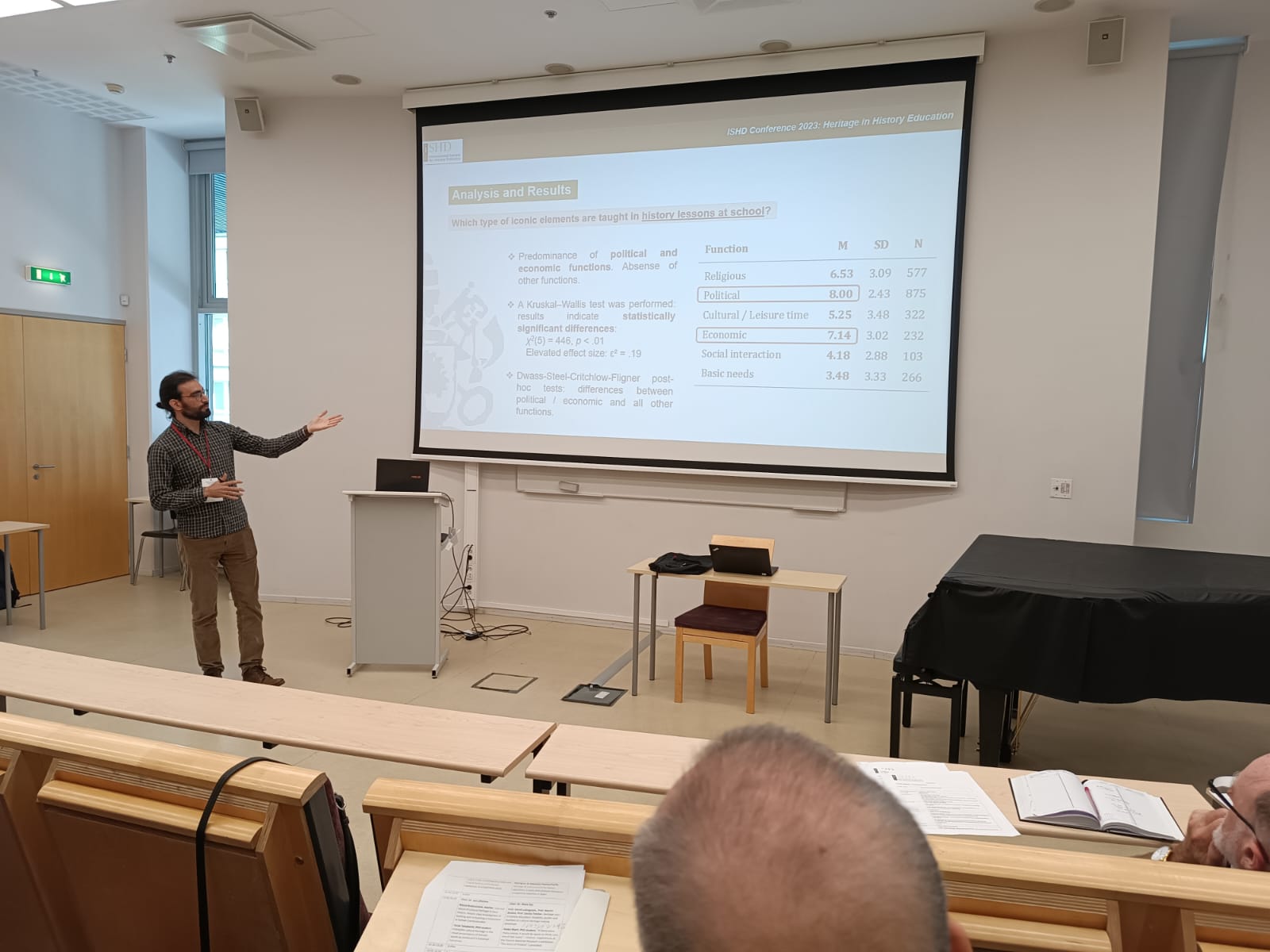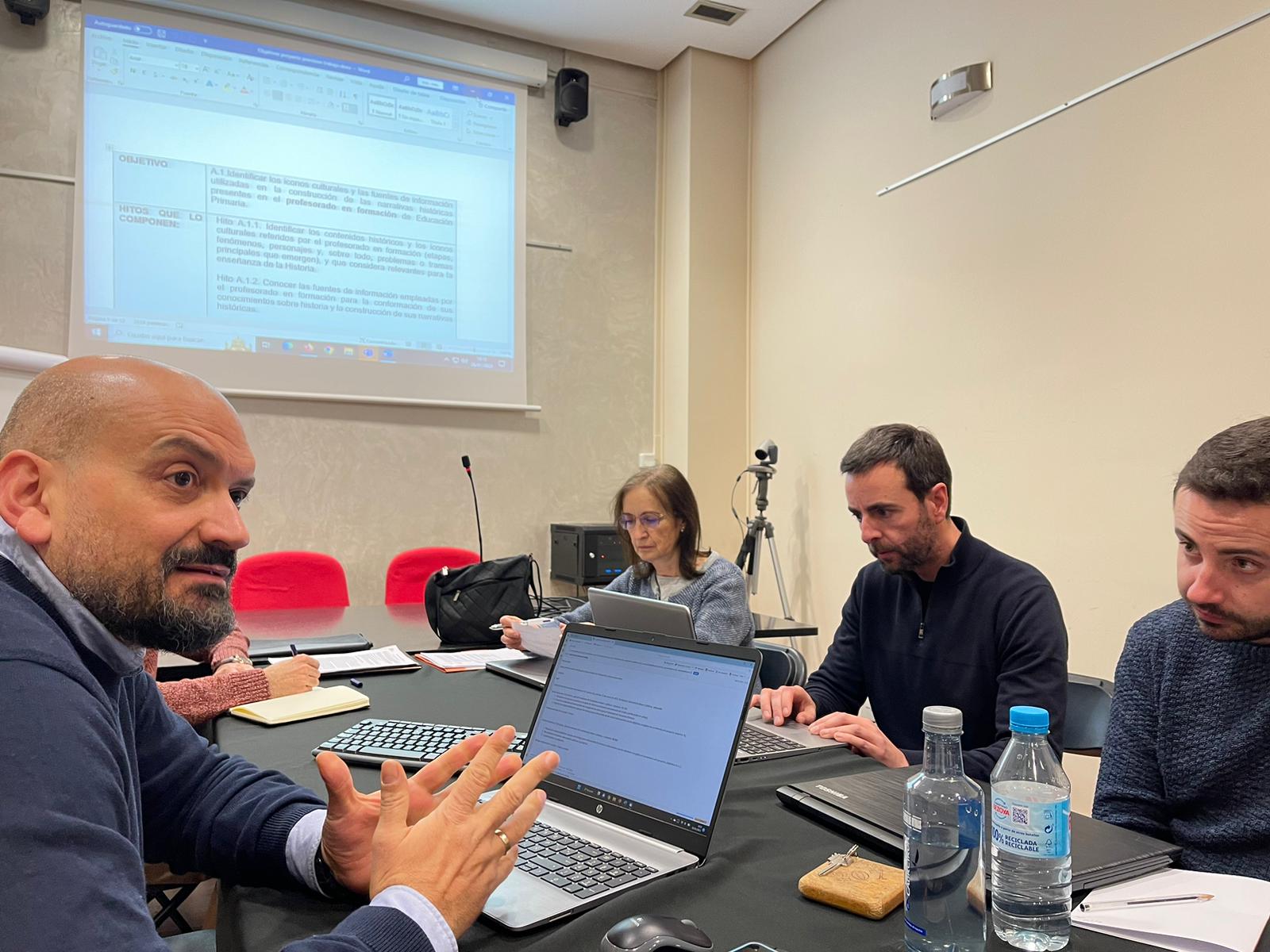Enseñanza y aprendizaje de la historia en Educación Primaria
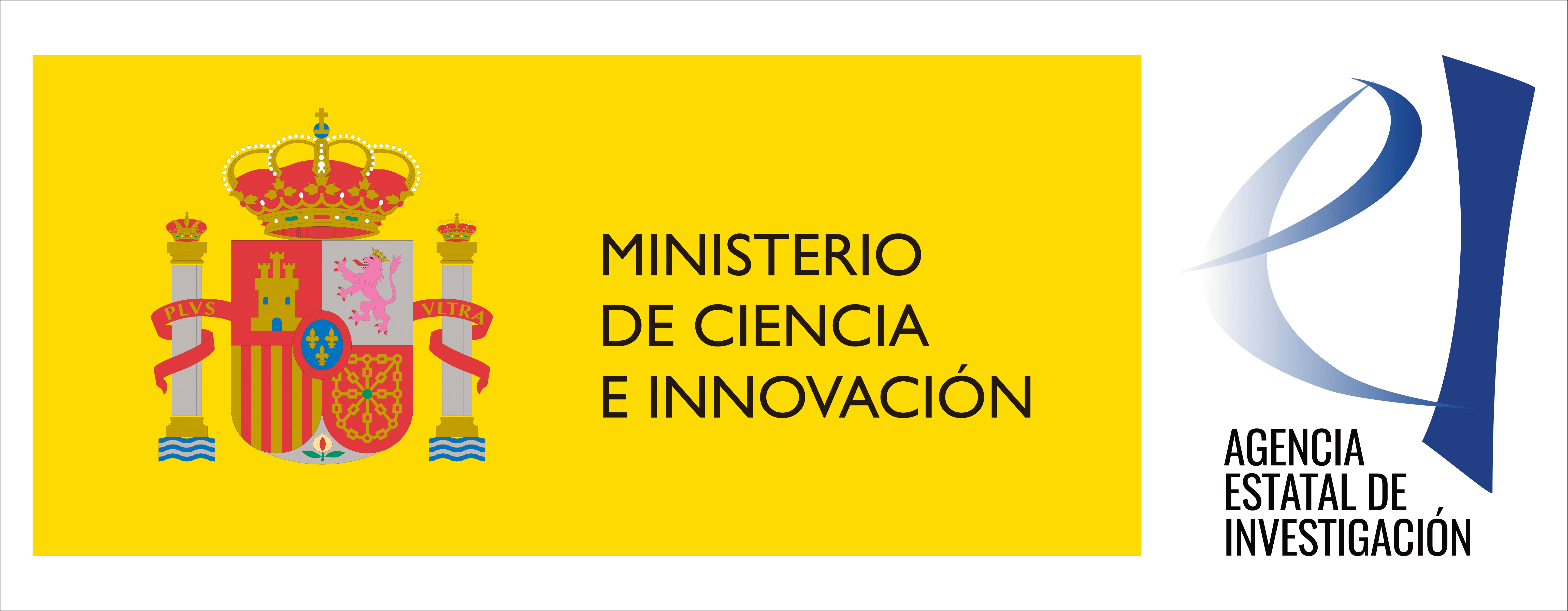
PID2020-114434RB-I00 FINANCIADO POR MCIN/ AEI /10.13039/501100011033
Enseñanza y aprendizaje de la historia en Educación Primaria: multiperspectiva y análisis de iconos culturales para la construcción de una ciudadanía crítica
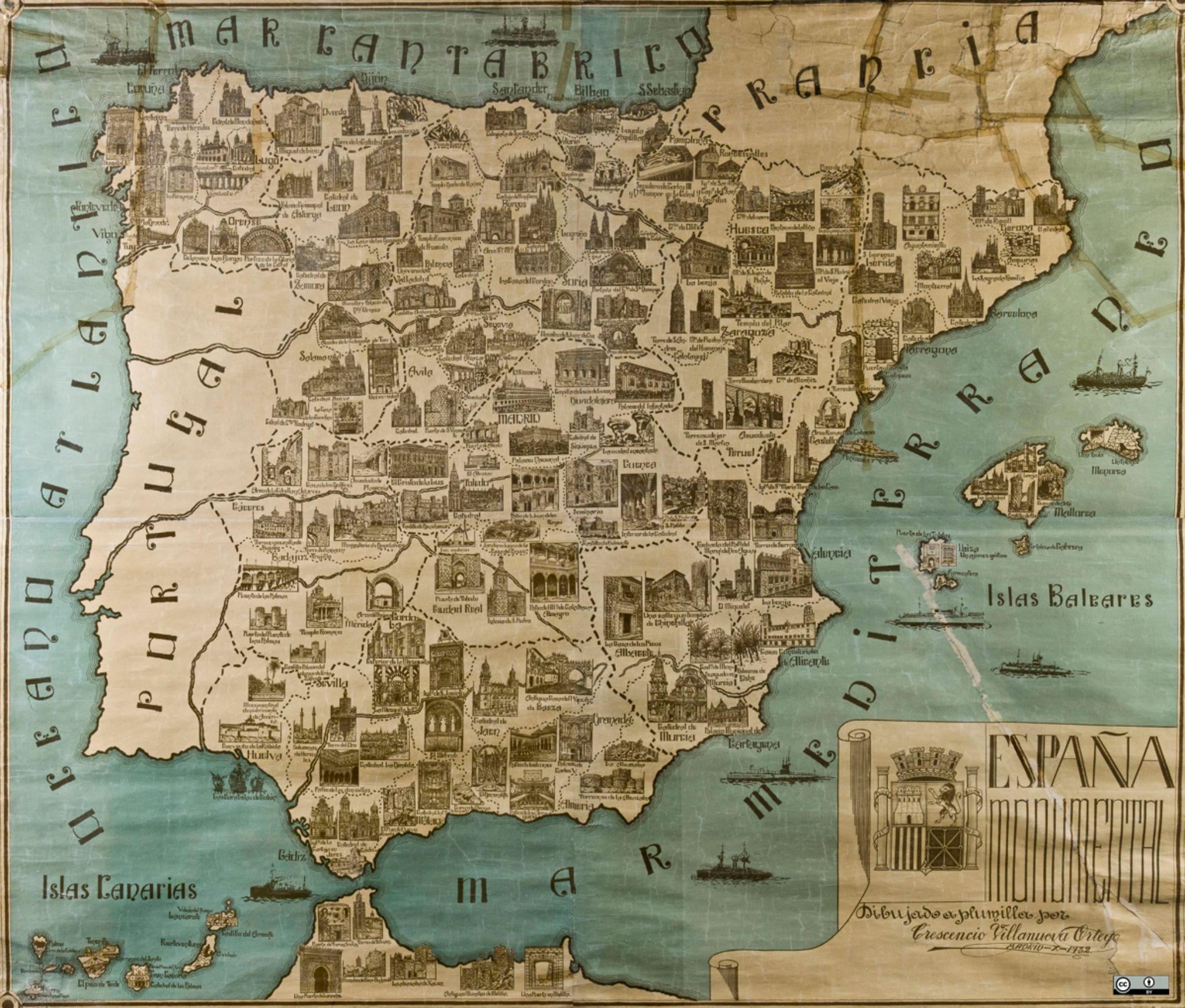
Conoce al equipo del proyecto
- Sebastián Molina Puche (Universidad de Murcia)
- María Sánchez Agustí (Universidad de Valladolid)
- Alejandro Egea Vivancos (Universidad de Murcia)
- Ana Belén Mirete Ruiz (Universidad de Murcia)
- Beatriz Hoster Cabo (CEU San Pablo)
- Carmen Fernández Rubio (Universidad de Oviedo)
- Diego Miguel Revilla (Universidad de Valladolid)
- Esther López Torres (Universidad de Valladolid)
- Javier J. Maquilón Sánchez (Universidad de Murcia)
- Jorge Ortuño Molina (Universidad de Murcia)
- José Ignacio Ortega Cervigón (Universidad Complutense de Madrid)
- Laura Arias Ferrer (Universidad de Murcia)
- Mercedes de la Calle (Universidad de Valladolid)
- Miguel A. Suárez Suárez (Universidad de Oviedo)
- Nayra Llonch Molina(Universidad de Lleida)
- Rosendo Martínez Rodríguez (Universidad de Valladolid)
Adoración Díaz López / Álvaro Lama / Ángel Isidro Miguel García / Augusta C. Valle Taimán / Beatrice Borghi / Caitríona Ní Cassaithe / Clara López Basanta / Francisco Javier Ibáñez López / Francisco Pérez Fernández / Gloria Solé / Helena Pinto / Ilaria Bellatti / Inmaculada Mena / Javier Martín Antón / José M. Martínez Ferreira / Julio Ariza Conejero / Kenneth Nordgren / Leonor Ruiz Guerrero / Lucía Mirete Ruiz / M.ª Teresa Carril Merino / María Leticia López Mondéjar / Pablo Muñoz Muñoz / Verónica Parisi Moreno
Resumen del Proyecto
En pleno siglo XXl, el auge y extensión de las tecnologías de la información y la comunicación ha traído consigo un nuevo, contradictorio y paradójico problema: la desinformación de la población. Esta situación está estrechamente ligada al consumo masivo de medios de comunicación a través de redes sociales, a las que el ciudadano medio se ha incorporado sin una formación previa o con criterios de uso obsoletos, válidos solo para los medios de comunicación tradicionales. En unos pocos años, las fake news o falsas noticias, y la distorsión entre la realidad y su discurso, se han apoderado del espacio público, dando lugar a enconados debates. Esta tendencia se ha incrementado durante estos tiempos de pandemia. Las fake news y el discurso de odio son dos tendencias que parecen haber inundado las redes, llegando a haber sido acuñado por Naciones Unidas el término “virus of hate”.Ahora más que nunca, el desarrollo de una ciudadanía crítica se muestra como algo fundamental. Sería erróneo pensar que esta problemática se circunscribe exclusivamente al ámbito de la comunicación, pues afecta de lleno al conjunto de actividades sociales y, muy especialmente, al mundo de la educación.
La propia Comisión Europea identifica como un pilar fundamental para combatir coordinadamente la desinformación la mejora de la alfabetización digital de los ciudadanos (EU, 2019). Pero no debemos entender esta alfabetización solo como un aspecto técnico relacionado con el manejo de las nuevas tecnologías, sino como un asunto educativo encaminado a favorecer habilidades relacionadas con la verificación y contraste de las informaciones, la capacidad de análisis de las mismas y su interpretación e inserción en un marco de pensamiento coherente y lógico. Y en ello, la Educación Histórica, y el desarrollo de habilidades y procedimientos asociados, tiene mucho que hacer y decir. Una enseñanza crítica de la historia, basada en la inclusión del método histórico en las aulas y en el desarrollo de habilidades de pensamiento. que parta de cuestiones problemáticas y relevantes, constituye una magnífica fórmula para la formación de la ciudadanía en este mundo cambiante y complejo .
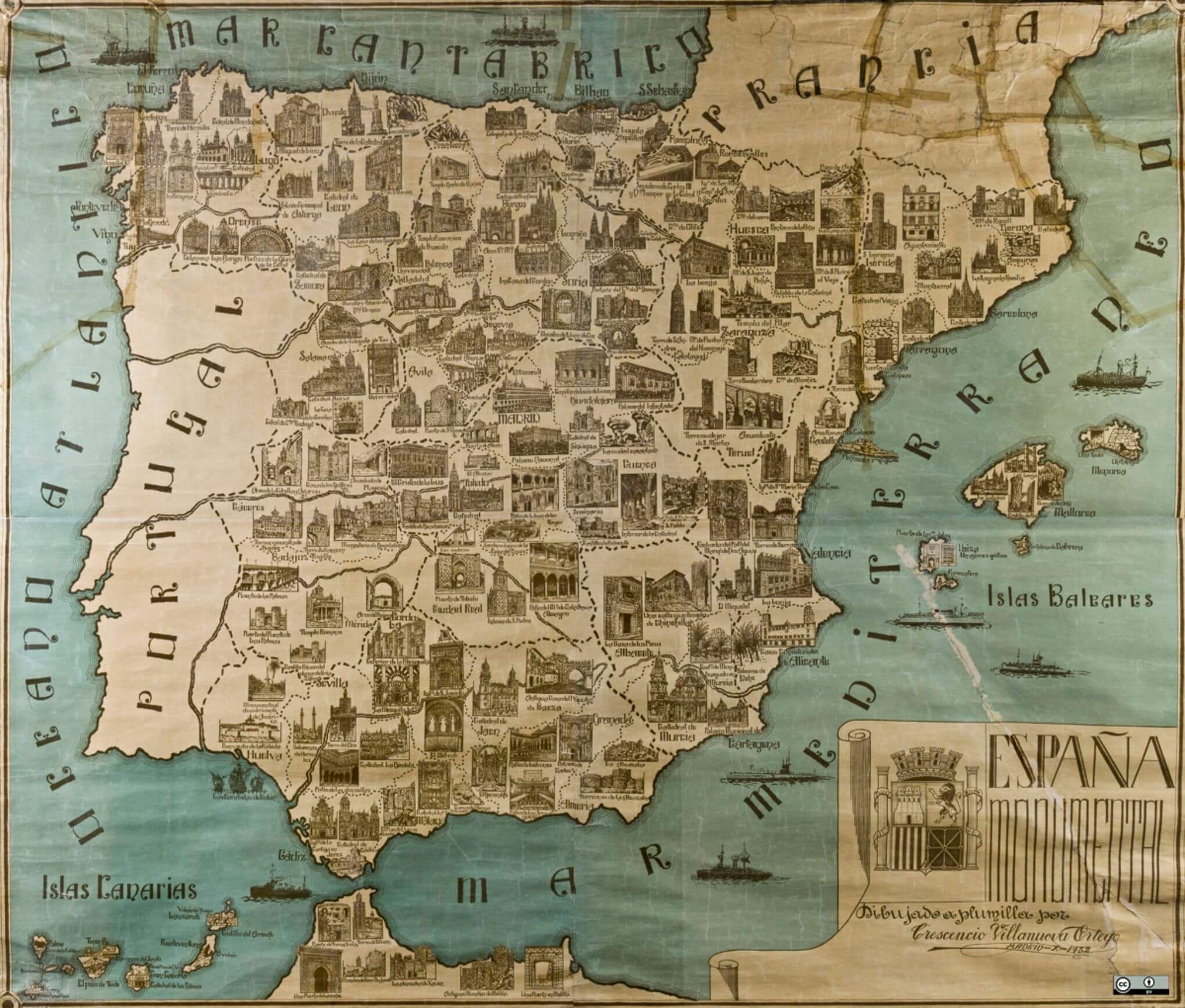
Objetivos
Es sabida la influencia de diversos factores ideológicos, culturales y contextuales en la enseñanza y aprendizaje de la historia. La cultura histórica se forma a través de diversas fuentes como historiografía, iconografía, museos, literatura y cine. Esta naturaleza pública de la historia condiciona las percepciones de profesores y estudiantes, generando visiones exclusivistas y emocionales del pasado, pero también ofreciendo oportunidades formativas.
El proyecto tiene como objetivo analizar este proceso, identificar los iconos culturales dominantes en la educación histórica y proponer intervenciones educativas para mejorar el proceso de enseñanza-aprendizaje, especialmente en la Educación Primaria. Se busca evitar la transmisión de discursos supremacistas, sexistas y xenófobos, fomentando una ciudadanía crítica. Se destaca la importancia de investigar la formación histórica de los niños, proponiendo enfoques pedagógicos activos centrados en el estudiante como alternativa a la enseñanza centrada en el docente.
Tradicionalmente, las investigaciones sobre las diferentes facetas de la comprensión histórica se han centrado en los jóvenes y adolescentes y son muy escasos, tanto en nuestro país como en su entorno, los estudios que han dirigido su mirada hacia la formación e información histórica que reciben los niños y niñas, tanto en las aulas como fuera de ellas.
De ahí la importancia de vehicular una investigación que contribuya a llenar esta laguna, identificando problemas subyacentes y proponiendo alternativas didácticas y formativas en relación con la Historia. Por eso, se ha optado por centrarse en la etapa de Educación Primaria (6 a 12 años), y específicamente en sus últimos cursos, de manera integral, atendiendo a los diferentes elementos que la componen y circundan (profesorado -en formación y en ejercicio-, alumnado, currículo, libros de texto y medios de información extracurriculares) y valorando la manera en la que estos contribuyen a la génesis de un conocimiento distorsionado de la historia.
Identificar los iconos culturales y las fuentes de información utilizadas en la construcción de las narrativas históricas presentes en el profesorado en formación de Educación Primaria.
Identificar los iconos culturales, enfoques de enseñanza y construcción de narrativas por parte del profesorado en ejercicio de Educación Primaria en las comunidades autónomas participantes (Andalucía, Asturias, Castilla-León, Cataluña, Madrid y Murcia)
Identificar los iconos culturales dominantes y las narrativas maestras utilizadas en los currículos de Educación Primaria
Identificar los iconos culturales y las fuentes de información utilizadas en la construcción de las narrativas históricas presentes en el alumnado de último curso (sexto) de Educación Primaria.
Valorar los iconos culturales dominantes y las narrativas maestras utilizadas en los libros de texto de Educación Primaria de las editoriales más utilizadas en las comunidades autónomas participantes (Andalucía, Asturias, Castilla-León, Cataluña, Madrid y Murcia).
Examinar las narrativas históricas que presentan las fuentes de información online (Wikipedia, canales y vídeos de YouTube, y otras páginas y redes sociales relevantes) referenciadas por el profesorado en formación y en ejercicio y el alumnado de sexto curso de Educación Primaria encuestado.
Examinar las narrativas históricas que presentan las fuentes literarias (cómic, novela histórica, álbumes ilustrados) referenciadas por el profesorado en formación y en ejercicio y el alumnado de sexto curso de Educación Primaria encuestado.
Examinar las narrativas históricas generadas en los elementos de ocio audiovisual (videojuegos, series de televisión y películas) descritos por el profesorado en formación y en ejercicio y el alumnado de sexto curso de Educación Primaria encuestado.
Examinar las narrativas históricas mostradas en los museos de Historia señalados y seleccionados por el profesorado en formación y en ejercicio y el alumnado de sexto curso de Educación Primaria encuestado.
Diseñar, aplicar y evaluar acciones formativas y recursos didácticos con carácter experimental, orientados al empleo de la multiperspectiva y el análisis crítico de iconos y referentes culturales históricos en los Grados de Educación Primaria de las Universidades participantes.
Diseñar, aplicar y evaluar acciones formativas para el profesorado en ejercicio de Educación Primaria orientados al empleo de la multiperspectiva y el análisis crítico de iconos y referentes culturales históricos.
Diseñar, aplicar y evaluar unidades formativas y materiales orientados al empleo de la multiperspectiva y el análisis crítico de iconos y referentes culturales históricos destinados al alumnado de cuarto, quinto y sexto de Educación Primaria.


